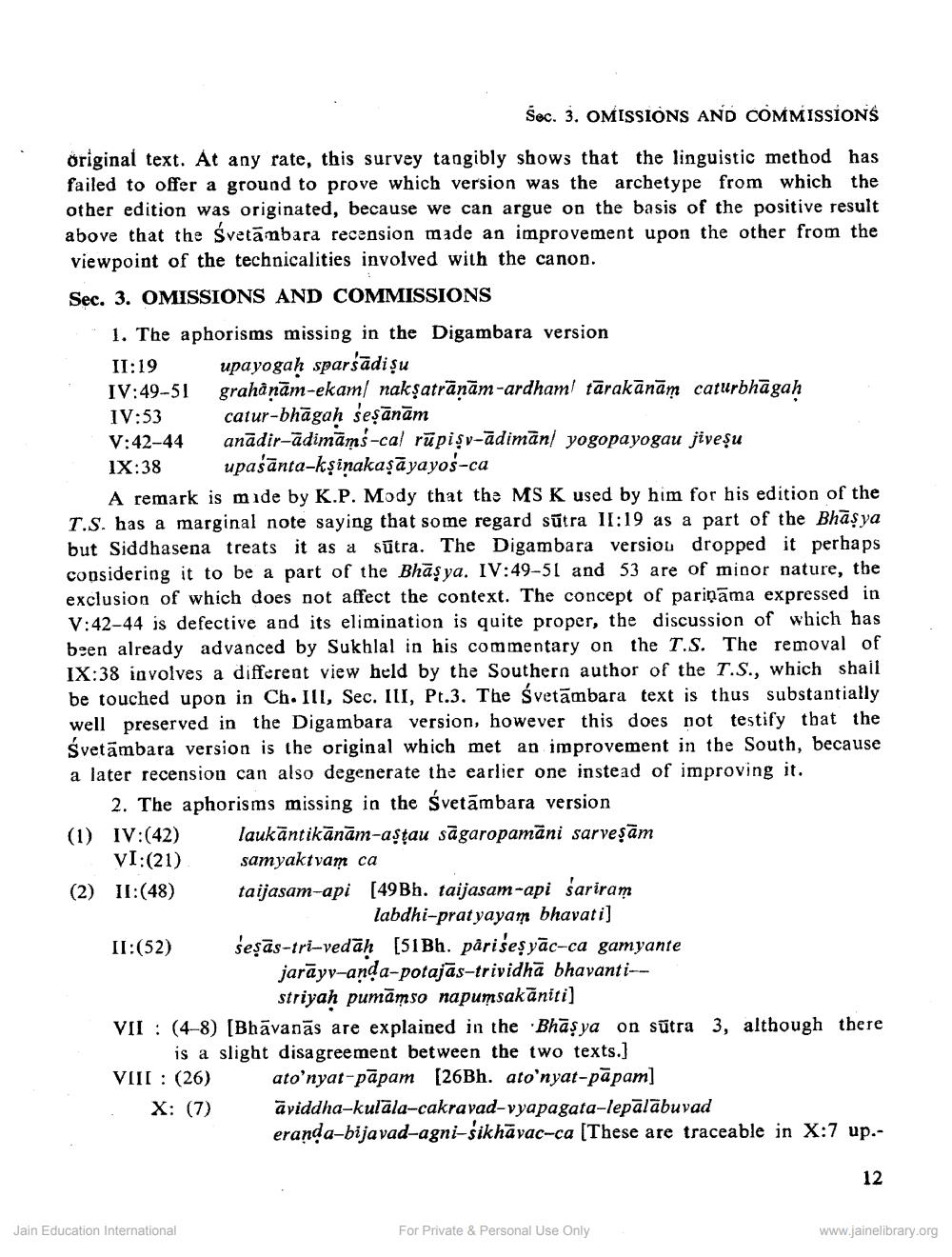________________
Sec. 3. OMISSIONS AND COMMISSIONS
original text. At any rate, this survey tangibly shows that the linguistic method has failed to offer a ground to prove which version was the archetype from which the other edition was originated, because we can argue on the basis of the positive result above that the Svetāmbara recension made an improvement upon the other from the viewpoint of the technicalities involved with the canon. Sec. 3. OMISSIONS AND COMMISSIONS "1. The aphorisms missing in the Digambara version
II:19 upayogah sparsādişu IV:49-51 grahånām-ekam nakşatrānām-ardham tārakānām caturbhāgah IV:53 catur-bhāgah seşānām V:42-44 anādir-ādimāņš-cal rūpişv-ādiman yogopayogau jiveșu IX:38 upaśānta-kşinakaşāyayos-ca
A remark is mide by K.P. Mody that the MS K used by him for his edition of the T.S. has a marginal note saying that some regard sūtra 11:19 as a part of the Bhāşya but Siddhasena treats it as a sūtra. The Digambara version dropped it perhaps considering it to be a part of the Bhāşya. IV:49-51 and 53 are of minor nature, the exclusion of which does not affect the context. The concept of pariņāma expressed in
V:42-44 is defective and its elimination is quite proper, the discussion of which has been already advanced by Sukhlal in his commentary on the T.S. The removal of IX:38 involves a different view held by the Southern author of the T.S., which shall be touched upon in Ch. III, Sec. III, Pt.3. The Svetāmbara text is thus substantially well preserved in the Digambara version, however this does not testify that the Svetämbara version is the original which met an improvement in the South, because a later recension can also degenerate the earlier one instead of improving it.
2. The aphorisms missing in the Svetāmbara version (1) IV:(42) laukāntikānām-astau sāgaropamāni sarveşām
VI:(21) samyaktvam ca (2) II:(48) taijasam-api [49Bh. taijasam-api sariram
labdhi-pratyayam bhavati] II:(52) seşās-tri-vedāh [51 Bh. päriseşyāc-ca gamyante
jarāyy-anda-potajās-trividhā bhavanti--
striyaḥ pumāmso napumsakāniti] VII : (4-8) [Bhāvanās are explained in the Bhāşya on sūtra 3, although there
is a slight disagreement between the two texts.] VIII : (26) ato'nyat-pāpam (26Bh. ato'nyat-pāpam] . X: (7) āviddha-kulāla-cakravad-vyapagata-lepālābuvad
eranda-bijavad-agni-śikhāvac-ca (These are traceable in X:7 up.
12
Jain Education International
For Private & Personal Use Only
www.jainelibrary.org




